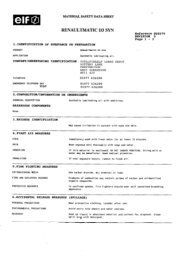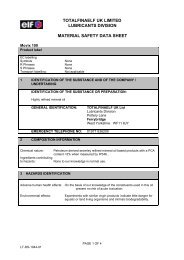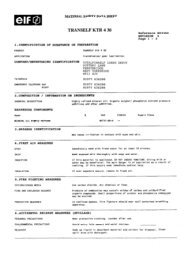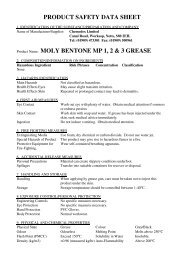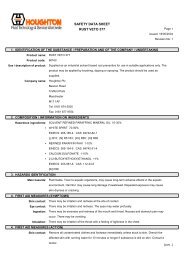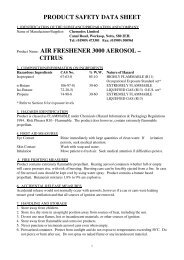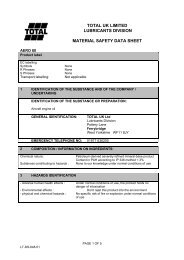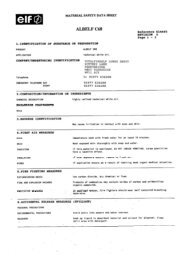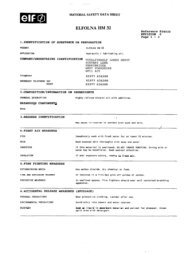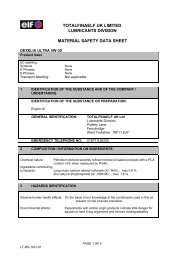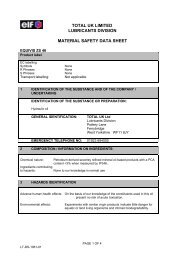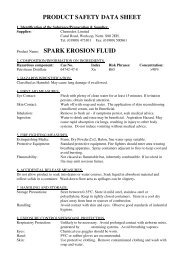67400-Rust Veto 100D.pdf
67400-Rust Veto 100D.pdf
67400-Rust Veto 100D.pdf
- No tags were found...
You also want an ePaper? Increase the reach of your titles
YUMPU automatically turns print PDFs into web optimized ePapers that Google loves.
Chapterl. IntroductionPoisson ratio, p:IIIA general equation of flexuring, which expresses the deflection ofthe piatecrustal in terms of the vertical and horizontal loads, mechanicalbending and flexural rigidity (Turcotte & Schubert, 1982),is employed in DEMOSTRAT and solved numerically.1.5 OutlineThe next two Chapters (2 and 3) discusses the general theory ofsediment gravity flows, including the triggering mechanism, erosion,models of tra~lsport and style of deposition. This review forms thebasis for the conceptual model that the author further formulates inmathematical terms. Chapter 4, is a review of the previous work onthe issue of the numerical modelling of massflow processes. Chapter5 explains the massflow model and its algorithms developed for thisthesis. The results of some simulations are given in Chapter 6. Finaldiscussions (Chapter 7) and conclusions (Chapter 8) close the book.A table with the explanakion of all symbols used in the volume isgiven in Appendix A. Appendix B describes the numerical methodemployed to calculate the integral used in the equation for a sediment'sexcess pore pressure (equation 2.14).II Chapter 21Sediment Instability onSubaqueous SlopesThe most important triggering mechanism for sediment gravity flows,leading to the transport and deposition of siliciclastic sediment indeep-water environments, is sedimentary slope failure (e.g., Saxov &Nieuwenhuis, 1982; Elrunsden & Prior, 1984; Colella & Prior, 1990;Maltman, 1994). The failure in sediment on a slope occurs whennormal stress, or its downslope "shearing" component, in the sedimentexceeds the resisting strength of the sediment (see section2.1.1). Slope failure normally leads to a slide, which may furthertransform into a slump and/or turn into a sediment gravity flow (asdiscussed in Chapter 3). In this Chapter, the instability of sedimenton subaqueous slopes is discussed.2.1 Analysis of Sediment Instability onSubaqueous SlopesSl~pe stability analysis is a well-known topic in the engineering disciplineof soil mechanics. Soil engineers are interested in the mechanicalprob!cms of mass failure when it is necessary to stabilize naturalslopes, or to create stable artificial ones, such as embarkments, roadcuts and other excavations. In creating artificial slopes, which maybe higher and/or steeper than the pre-existing natural slope, many"landslides" (mass movements) are accidentally produced by increas-
Issued: 01/03/2007SAFETY DATA SHEETRUST VETO <strong>100D</strong> Page 5R52: Harmful to aquatic organisms.R36: Irritating to eyes.R65: Harmful: may cause lung damage if swallowed.R66: Repeated exposure may cause skin dryness or cracking.Legal disclaimer:The above information is believed to be correct but does not purport to be all inclusive and shallbe used only as a guide. This company shall not be held liable for any damage resulting fromhandling or from contact with the above product.[final page]



